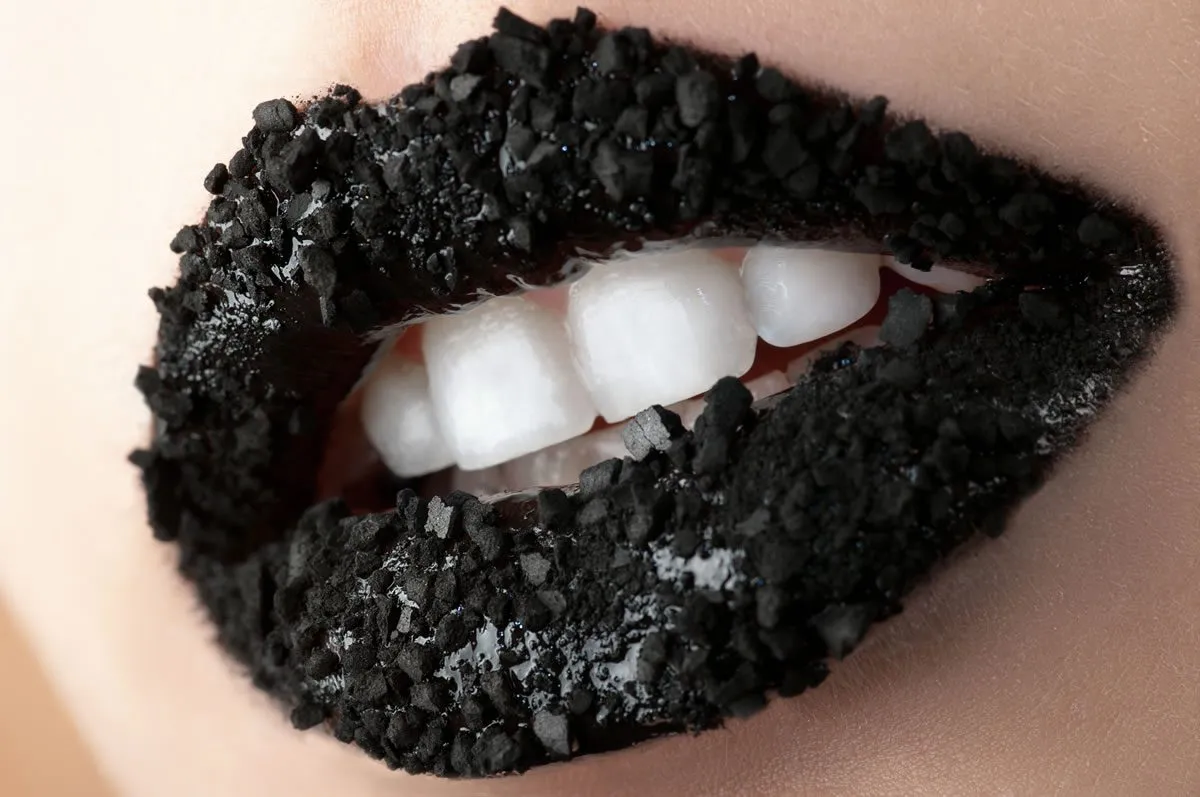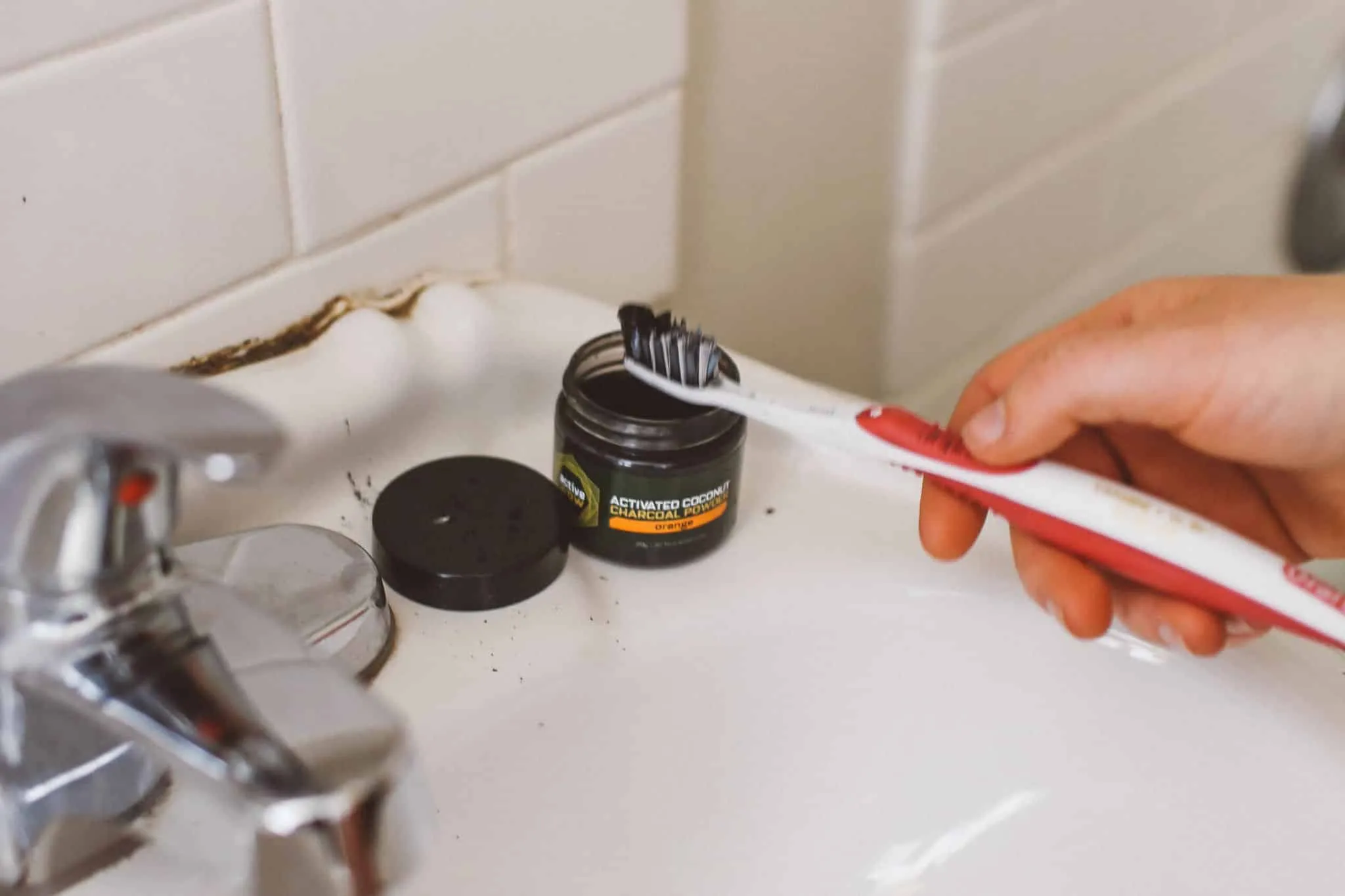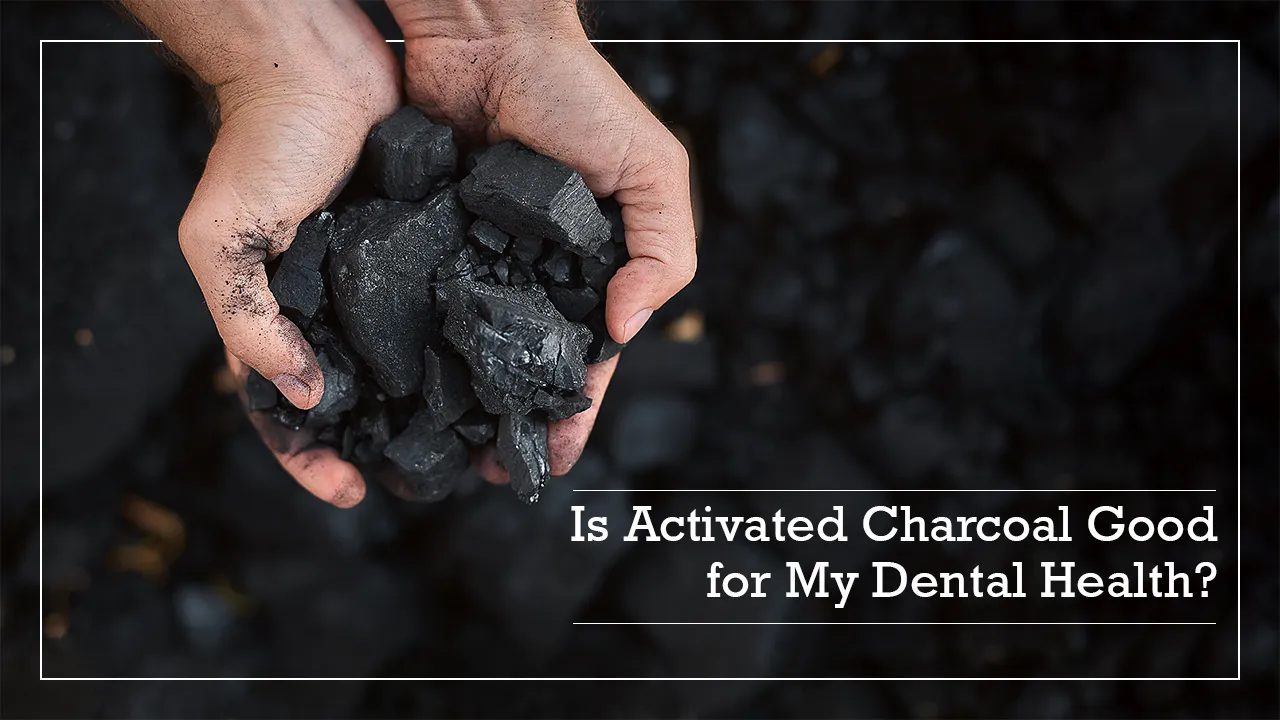What is Activated Charcoal
Activated charcoal has gained significant popularity as a natural teeth-whitening remedy. But what exactly is it? Unlike the charcoal used for grilling, activated charcoal is a fine, black powder made from various carbon-rich sources such as coconut shells, wood, or peat. The ‘activated’ part refers to a process that increases its porosity. This process involves exposing the charcoal to high temperatures, often combined with a gas, to create tiny pores. These pores enhance the charcoal’s ability to trap and absorb substances, making it an effective tool for various applications, including teeth whitening. Its absorbent properties have made it a staple in the health and beauty industries, as well as in emergency medicine for treating certain types of poisoning.
The History of Activated Charcoal
The use of charcoal, including activated charcoal, dates back thousands of years. Ancient civilizations, including the Egyptians, Greeks, and Romans, utilized charcoal for medicinal purposes. It was used to treat digestive issues, absorb odors, and even as a filter for water. The Egyptians, known for their advanced understanding of health and hygiene, also used charcoal-based products for oral care. However, the specific process of creating activated charcoal, as we know it today, evolved over time. The development of modern activated charcoal, with its enhanced absorption capabilities, is a testament to the ongoing refinement of ancient practices. Today, the use of activated charcoal has expanded beyond traditional applications to include teeth whitening, skin care, and even air and water purification.
How Activated Charcoal Works for Teeth Whitening

Activated charcoal works to whiten teeth through a combination of adsorption and mild abrasion. Its porous nature allows it to attract and bind to stain-causing compounds on the surface of the teeth. Unlike bleaching agents that change the color of the tooth enamel, activated charcoal focuses on removing external stains. The abrasive nature of activated charcoal helps to scrub away these stains, leading to a brighter smile. This makes it particularly effective for removing stains caused by coffee, tea, wine, and other foods and drinks. However, it’s important to note that activated charcoal does not change the intrinsic color of the teeth, meaning it might not be as effective on stains that are embedded within the enamel.
The Science Behind Charcoal Absorption
The effectiveness of activated charcoal in teeth whitening lies in its unique ability to adsorb various substances. Adsorption is a surface phenomenon where molecules of a substance adhere to the surface of another. The activated charcoal’s high porosity significantly increases its surface area, providing more space for these stain-causing compounds to adhere. When you brush with activated charcoal, the charcoal particles bind to these stains and other impurities, effectively lifting them from the surface of your teeth. This process is more about mechanical removal rather than a chemical reaction that changes the tooth’s color. The adsorption properties also extend to removing plaque and bacteria, which can contribute to fresher breath and improved oral hygiene.
Types of Stains Activated Charcoal Targets
Activated charcoal is most effective at removing extrinsic stains, those that accumulate on the surface of the teeth. These stains are typically caused by dietary habits and lifestyle choices. Some common examples include stains from coffee, tea, red wine, and certain berries. Smoking and tobacco use can also lead to significant staining that activated charcoal can help to address. The charcoal’s abrasive nature helps to scrub away these surface stains, revealing the natural color of the teeth beneath. However, it’s important to understand that activated charcoal may not be as effective on intrinsic stains, which are stains that are embedded within the tooth enamel. These often require professional whitening treatments to address.
Surface Stains vs Deep Stains

Understanding the difference between surface and deep stains is crucial for managing expectations when using activated charcoal. Surface stains, or extrinsic stains, are the easiest to remove because they sit on the outer layer of the tooth enamel. These are often caused by the foods and drinks we consume and the products we use. Activated charcoal excels at removing these stains, resulting in a noticeable brightening effect. Deep stains, or intrinsic stains, are more difficult to remove as they are embedded within the tooth enamel. These can be caused by genetics, certain medications, or dental trauma. Because activated charcoal primarily works on the surface, it may not significantly impact deep stains. For such cases, professional teeth whitening treatments may be more effective.
How to Use Activated Charcoal for Whitening Teeth
Using activated charcoal for teeth whitening is a simple process, but it’s essential to do it correctly to maximize its benefits and minimize potential risks. The process typically involves adding a small amount of activated charcoal powder or using a charcoal-infused toothpaste to your toothbrush. You should gently brush your teeth with the charcoal, paying close attention to all surfaces. It’s important to brush in a circular motion for about two minutes, focusing on removing stains. After brushing, rinse your mouth thoroughly with water until all the black residue is gone. Many people follow up with their regular toothpaste to ensure complete cleaning and remove any lingering charcoal particles. Repeat this process a few times a week for optimal results.
Choosing the Right Activated Charcoal Product
The market offers a variety of activated charcoal products for teeth whitening, and choosing the right one can make a difference in your results. Consider the source of the activated charcoal; it should be derived from a reputable source like coconut shells or wood. Avoid products with added chemicals or unnecessary ingredients. Look for products that have been tested and certified to ensure safety. Additionally, consider the form of the product. Activated charcoal is available as powder, toothpaste, or even in pre-packaged strips. The choice depends on personal preference and convenience. It is essential to read reviews and research brands to ensure you are selecting a safe and effective product. Consulting with your dentist can also help you choose the best product based on your specific oral health needs.
Activated Charcoal Toothpaste vs Powder

The choice between activated charcoal toothpaste and powder often comes down to personal preference and convenience. Activated charcoal toothpaste combines the benefits of activated charcoal with the cleaning and fluoride components found in traditional toothpaste. This option is generally easier to use because it’s a familiar product with a pre-mixed formula. Activated charcoal powder, on the other hand, is pure activated charcoal that you apply directly to your toothbrush. Some users prefer powder, believing it offers a more concentrated dose of the whitening agent. However, using powder can be messier and may require extra care to avoid spills. Both options can be effective, but the key is to choose a high-quality product from a reputable source and use it as directed to ensure your safety and optimal results.
Step by Step Guide Using Activated Charcoal
Using activated charcoal for teeth whitening correctly involves following a few key steps to ensure the best results and minimize potential risks. Start by selecting a high-quality activated charcoal product. Wet your toothbrush and either dip it into the activated charcoal powder or apply a small amount of charcoal toothpaste. Gently brush your teeth in small, circular motions for about two minutes, ensuring you cover all surfaces. After brushing, rinse your mouth thoroughly with water, making sure to remove all traces of the black residue. You might need to rinse several times to ensure complete cleaning. Some people also choose to brush with regular toothpaste afterward to remove any remaining charcoal and fluoride. Repeat this process a few times a week for optimal results and always be mindful of any sensitivity or discomfort during or after use.
Precautions and Safety Measures
While activated charcoal can be a beneficial tool for teeth whitening, it is crucial to take precautions to ensure your safety and maintain your oral health. Always choose a product from a reputable source and follow the manufacturer’s instructions. Avoid excessive use, as over-brushing can lead to enamel erosion and increased sensitivity. Use a soft-bristled toothbrush to avoid damaging your enamel. Be sure to rinse your mouth thoroughly after each use to remove any remaining charcoal particles. Consider consulting with your dentist before using activated charcoal, especially if you have existing dental issues or sensitivities. If you experience any discomfort or adverse effects, such as increased sensitivity or irritation, discontinue use immediately and consult with a dental professional.
Potential Side Effects of Activated Charcoal

While activated charcoal is generally considered safe, some potential side effects can occur. One of the most common concerns is enamel erosion, particularly if used too aggressively or frequently. The abrasive nature of charcoal can wear down the enamel over time, making your teeth more susceptible to cavities and sensitivity. Some users may experience increased tooth sensitivity or gum irritation. Additionally, charcoal can sometimes stain or discolor dental work, such as fillings or crowns. In rare cases, excessive use of activated charcoal can lead to the disruption of the natural balance of bacteria in your mouth, potentially causing other oral health issues. If you experience any of these side effects, it’s crucial to stop using the product and consult with your dentist immediately.
When to Consult a Dentist
It’s essential to consult with your dentist before incorporating activated charcoal into your oral hygiene routine. A dentist can assess your overall oral health and determine if activated charcoal is a suitable option for you. They can also advise you on proper usage to minimize the risk of potential side effects like enamel erosion or increased sensitivity. If you have any existing dental issues, such as cavities, gum disease, or sensitive teeth, your dentist can provide guidance on whether activated charcoal is appropriate. Regular dental check-ups are always crucial, especially if you are using any new oral hygiene products. If you experience any discomfort, increased sensitivity, or other unusual symptoms, discontinue use and seek professional dental advice immediately.
Alternatives to Activated Charcoal for Teeth Whitening
If you’re looking for alternatives to activated charcoal for teeth whitening, several options are available. Whitening toothpaste containing peroxide can effectively remove surface stains. Whitening strips are another popular option, offering a convenient way to apply a whitening agent directly to your teeth. These strips typically contain a low concentration of hydrogen peroxide. For those seeking professional results, in-office whitening treatments are available, providing immediate and significant whitening effects. The best alternative for you will depend on your individual needs, the severity of the staining, and your desired level of whitening. Always consult with your dentist to determine the most suitable and safest option for your specific oral health conditions.
Professional Teeth Whitening Options

Professional teeth whitening options offer the most significant and often quickest results. Dentists use stronger whitening agents, such as high-concentration hydrogen peroxide, and specialized techniques to achieve dramatic whitening effects. In-office whitening treatments are performed under controlled conditions, minimizing the risk of sensitivity and ensuring consistent results. Another option is custom-fitted whitening trays provided by your dentist for at-home use. These trays are designed to fit your teeth perfectly and dispense a professional-strength whitening gel. Professional whitening treatments are often more expensive than over-the-counter options, but the results are usually more noticeable and long-lasting. Consulting with your dentist can help you determine the best professional whitening option based on your needs and oral health.
Over the Counter Whitening Products
Over-the-counter whitening products provide a convenient and affordable alternative to professional treatments. Whitening toothpaste, containing ingredients like hydrogen peroxide or other mild abrasives, can help remove surface stains and brighten your smile. Whitening strips, readily available at drugstores, are another popular choice. These thin, flexible strips contain a whitening gel and are applied directly to the teeth for a specific amount of time each day. Whitening gels and trays, sold without a prescription, offer a more concentrated whitening treatment than toothpaste. Always follow product instructions carefully and be mindful of potential side effects, such as tooth sensitivity. While over-the-counter products can provide noticeable results, they may not be as effective as professional treatments for more severe staining.
Final Thoughts on Activated Charcoal for Whitening Teeth
Activated charcoal can be a useful tool for teeth whitening, especially for removing surface stains caused by coffee, tea, and other common culprits. Its absorbent properties and mild abrasive action can help to brighten your smile. However, it’s important to approach its use with caution. Always choose high-quality products, follow the instructions carefully, and be aware of potential side effects. Overuse or improper use can lead to enamel erosion and increased sensitivity. Consider consulting with your dentist before incorporating activated charcoal into your oral hygiene routine. They can assess your oral health and guide you on whether it’s a suitable option for you. By taking the right precautions and being informed, you can make an educated decision about using activated charcoal to achieve a brighter, healthier smile.
